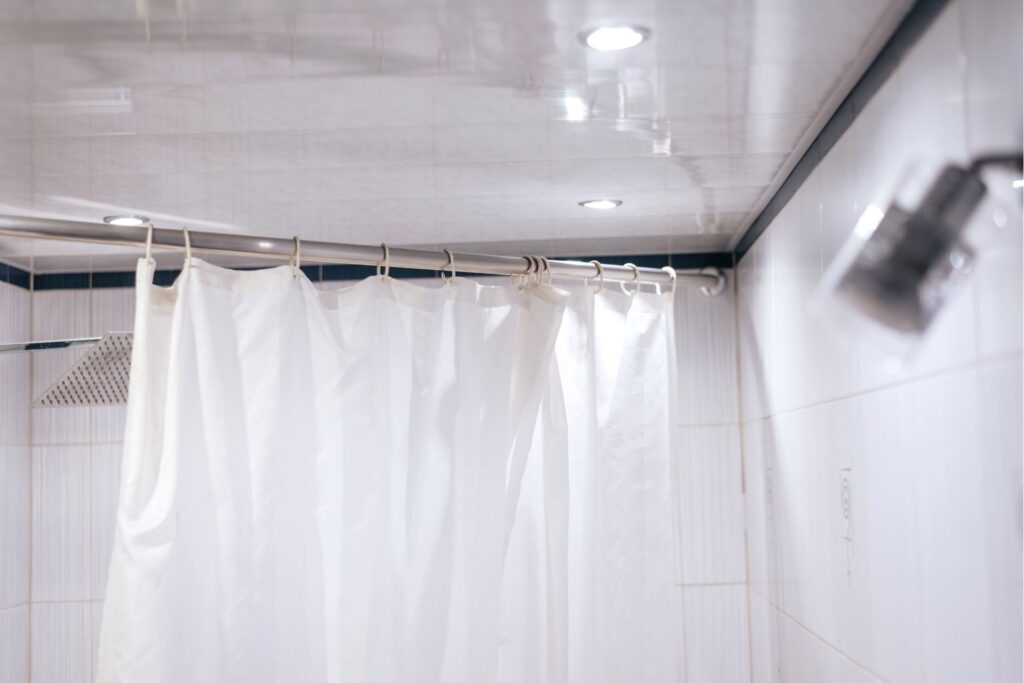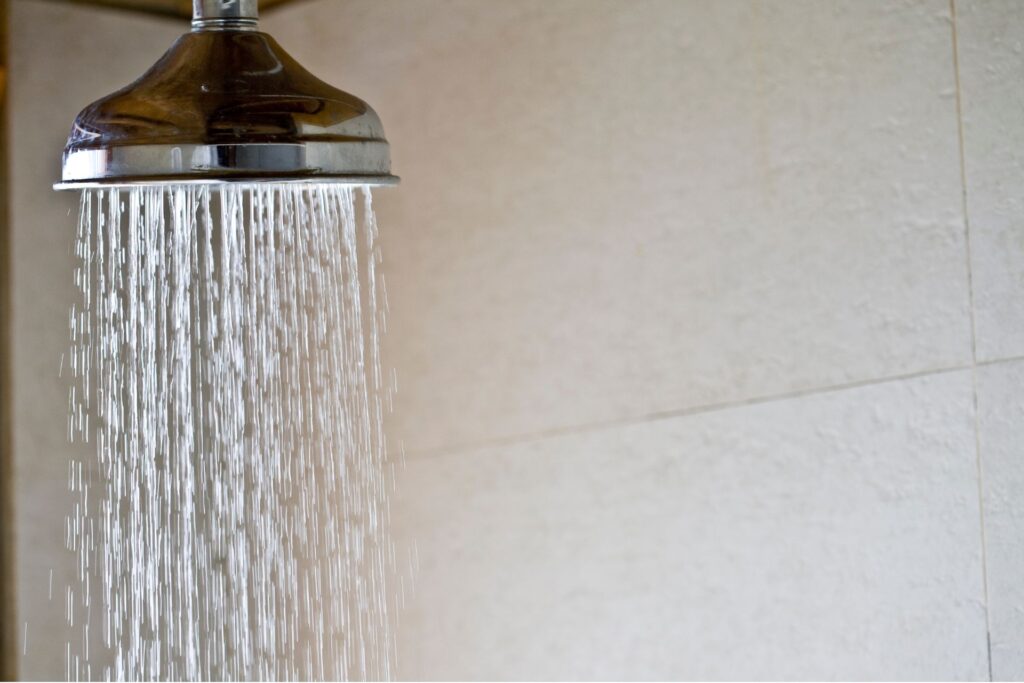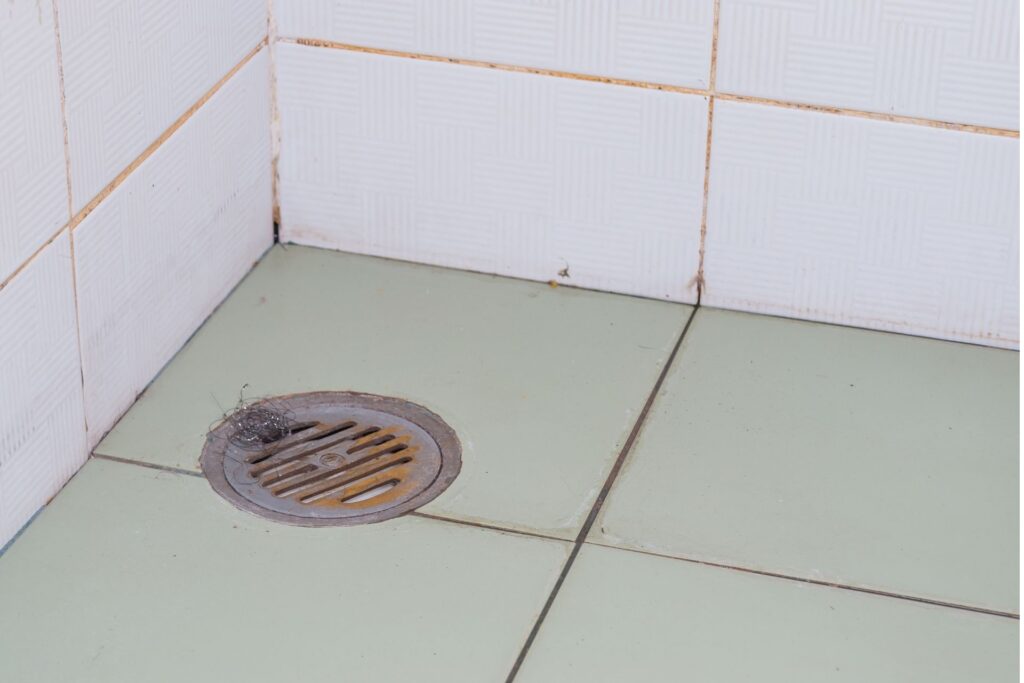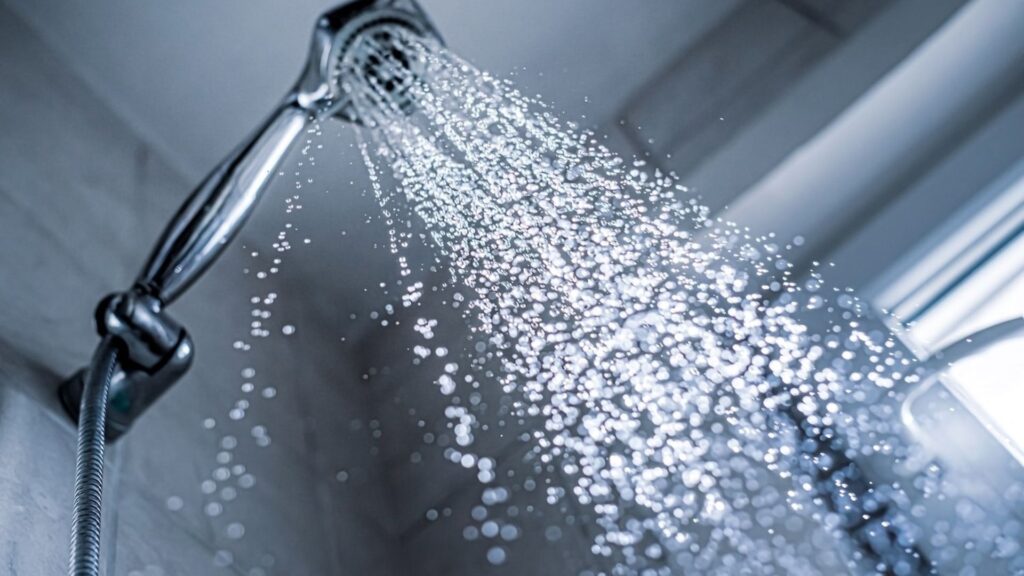Welcome to our comprehensive guide on tackling one of the most common yet frustrating issues in household maintenance: cleaning shower curtain mold. Mold on shower curtains isn’t just an eyesore; it poses potential health risks, from allergies to respiratory problems. This guide aims to demystify the process of effectively removing mold, ensuring your bathroom remains a clean and safe space. From identifying the causes of mold growth to step-by-step cleaning instructions and prevention tips, we’ve got you covered. Whether your shower curtain is fabric, plastic, or vinyl, you’ll learn how to restore its cleanliness and keep mold at bay for good. Let’s dive into creating a fresher, healthier bathroom environment together.
To clean mold from your shower curtain, start by removing it carefully to avoid spreading mold spores. For plastic or vinyl curtains, wash them in the machine with a mix of baking soda and vinegar, then air dry. Fabric curtains can often be machine washed on a gentle cycle with mild detergent; check the care label first. For tough mold, natural remedies like vinegar or tea tree oil can be effective. Remember to wear protective gloves and ventilate the area. Prevent future mold by keeping the bathroom well-ventilated, drying the curtain after use, and regularly cleaning it. Replace the curtain if the mold persists despite cleaning.
- What Causes Mold On Shower Curtains?
- Health Risks Associated With Shower Curtain Mold
- Pre-Cleaning Steps
- How To Clean Shower Curtain Mold: Step-By-Step Instructions
- Preventing Mold On Shower Curtains
- The Best Mold-Resistant Shower Curtains
- FAQs: About How To Clean Shower Curtain Mold
- Conclusion
- Find A Professional Plumbing Company Near You
What Causes Mold On Shower Curtains?
Have you ever pulled back your shower curtain only to find unsightly mold spots staring back at you? It’s a common issue that plagues many bathrooms, but what exactly causes mold to grow on shower curtains? In this comprehensive guide, we’ll dive deep into the conditions that lead to mold growth, explore the different types of mold that can invade your bathroom, and offer practical advice to keep your shower space clean and mold-free.
Understanding Mold Growth in the Bathroom Environment
Mold thrives in environments that provide three key ingredients: moisture, warmth, and organic material. Unfortunately, your shower curtain offers the perfect trifecta for mold to grow and multiply.
Dampness: Bathrooms, by nature, are humid environments. Every time you take a hot shower, steam increases the humidity level in the room. When the shower curtain is left wet, it becomes a prime breeding ground for mold. The longer the curtain stays damp, the greater the chance for mold to take hold.
Lack of Ventilation: Proper air circulation is crucial in preventing mold growth. Bathrooms without adequate ventilation allow moisture to linger in the air and on surfaces, including shower curtains. This stagnation not only supports but accelerates mold growth, making it harder to combat.
Organic Material: Mold needs something to feed on, and organic material found on your shower curtain serves as the perfect buffet. This can include soap scum, body oils, and even shampoo residues that accumulate over time. Combined with moisture and warmth, these organic materials create an ideal environment for mold to flourish.
Types of Mold Found in Bathrooms
Several types of mold can make their home in your bathroom, but not all molds are created equal. Some common varieties include:
Cladosporium: This mold type can appear as black or green spots and is commonly found on fabrics, making your shower curtain a potential target.
Aspergillus: Often appearing in a variety of colors, Aspergillus can grow in densely packed colonies and is known for its powdery texture.
Penicillium: With a distinctive blue or green color, Penicillium mold thrives in damp environments and can spread rapidly if not addressed.
Each type of mold presents its own challenges and health risks, making it important to prevent mold growth in the first place or remove it promptly if it does appear.
The fight against mold on shower curtains is ongoing but entirely manageable. By understanding the conditions that lead to mold growth—dampness, lack of ventilation, and the presence of organic material—you can take proactive steps to keep your bathroom mold-free. Regular cleaning, ensuring proper ventilation, and keeping your shower curtain dry are key strategies in preventing mold growth. By staying vigilant and adopting these practices, you can maintain a clean, healthy shower space free of unsightly and potentially harmful mold.

Health Risks Associated With Shower Curtain Mold
In today’s health-conscious world, understanding the risks associated with mold in our living environments, particularly in our bathrooms, is paramount. Mold on shower curtains isn’t just a cosmetic issue—it’s a potential health hazard. This section delves into the various health risks posed by shower curtain mold and underscores the importance of addressing this common problem without delay.
Understanding the Health Risks of Shower Curtain Mold
Mold thrives in damp, warm environments, making the bathroom a common battleground for this persistent foe. When mold takes up residence on your shower curtain, it doesn’t just mar the aesthetics of your bathroom; it poses several potential health risks that are essential to be aware of.
Allergies and Respiratory Problems
One of the most immediate and noticeable effects of mold exposure is its potential to exacerbate or trigger allergies. For individuals sensitive to mold, exposure can lead to a host of allergic reactions, including sneezing, runny or blocked noses, itchy eyes, and skin rashes. More concerning, however, is the impact on respiratory health. Mold spores, when inhaled, can irritate the airways, leading to coughing, wheezing, and in severe cases, asthma attacks. Those with pre-existing respiratory conditions or compromised immune systems are at a higher risk of experiencing these symptoms.
Irritation
Beyond allergies and respiratory issues, mold exposure can also irritate the eyes, skin, and throat. Even for those who aren’t allergic, the presence of mold can lead to uncomfortable irritation that can disrupt daily life. Eye irritation can be particularly troublesome, leading to redness, itching, and in some cases, a burning sensation.
The Importance of Prompt Mold Removal
Given the potential health risks associated with shower curtain mold, it’s clear why timely action is crucial. Allowing mold to persist not only exacerbates these health risks but also can lead to mold spreading to other areas of your home, creating a more significant problem.
Cleaning mold off shower curtains promptly is not just about maintaining the aesthetic appeal of your bathroom but also ensuring the health and safety of your household. Regular cleaning and maintenance can prevent mold growth, and in cases where mold has already appeared, using appropriate cleaning methods and products can effectively remove mold and mitigate health risks.
Moreover, considering alternatives such as mold-resistant shower curtains or improving ventilation in the bathroom can be effective strategies in preventing mold growth in the first place. Ensuring that your bathroom remains well-ventilated and dry can significantly reduce the likelihood of mold taking root.
The presence of mold on shower curtains is a health concern that should not be taken lightly. Understanding the potential health risks associated with mold exposure is the first step toward mitigating these risks. By taking prompt and effective action to clean and prevent mold growth, you can ensure a safer, healthier living environment for you and your loved ones. Remember, a clean bathroom is not just about aesthetics; it’s about health and well-being.

Pre-Cleaning Steps
In the quest to maintain a pristine and healthy bathroom, embarking on a thorough cleaning regimen is essential. Preparing your space correctly can significantly impact the effectiveness of your cleaning efforts, especially when dealing with areas prone to moisture and mold, such as showers. This guide delves into the crucial pre-cleaning steps to ensure a safe and efficient cleaning process, focusing on removing the shower curtain and gathering necessary supplies.
Removing the Shower Curtain Safely
The shower curtain is often a breeding ground for mold and mildew due to the damp conditions of the bathroom. Mold spores, if disturbed, can become airborne and pose health risks. Therefore, it’s imperative to remove your shower curtain with caution. Start by slowly pulling the curtain off its rings or hooks, minimizing agitation. It’s advisable to wear gloves and a mask, especially if you’re sensitive to allergens. If the curtain is washable, place it directly into a washing machine set on a gentle cycle with hot water and a mildew-fighting laundry detergent. For plastic or non-washable curtains, spraying a mold remover and wiping it down before rinsing off can be effective. Ensure the area is well-ventilated throughout the process.
Gathering Necessary Cleaning Supplies and Protective Gear
Before diving into the cleaning task, organizing all necessary supplies will streamline the process, ensuring you don’t have to pause midway to find something. Essential cleaning items include a bathroom cleaner or a homemade solution of vinegar and water, a scrub brush or sponge, and a spray bottle for easy application. For tackling tougher mold or mildew stains, having a specialized mold remover at hand can be beneficial.
Protective gear is just as important as the cleaning supplies. Mold and cleaning agents can irritate the skin, eyes, and respiratory system. Therefore, wearing rubber gloves, goggles, and a mask can provide the necessary protection. Additionally, donning old clothes or an apron will protect your clothing from bleach stains or other harsh chemicals.
In summary, the initial steps of removing the shower curtain safely and gathering all necessary cleaning supplies and protective gear are pivotal in setting the stage for a successful bathroom cleaning session. These precautions not only ensure that the cleaning process is efficient but also safeguard your health against potential irritants. By following these guidelines, you’re on your way to restoring your bathroom to a sparkling, mold-free state.

How To Clean Shower Curtain Mold: Step-By-Step Instructions
Creating a comfortable and clean bathroom environment is essential for both hygiene and overall well-being. Among various tasks, keeping your shower curtain free from mold is crucial, as it not only affects the appearance of your bathroom but also your health. Mold thrives in moist environments, making your shower curtain a prime target. In this comprehensive guide, we’ll walk you through the steps to effectively clean mold from shower curtains, ensuring a fresh and safe bathroom space. Whether your curtain is made of plastic, vinyl, or fabric, we’ve got you covered with practical and eco-friendly solutions.
For Plastic/Vinyl Curtains
Cleaning plastic or vinyl shower curtains is simpler than you might think, and you don’t need to buy expensive cleaners. The secret? Your kitchen staples: baking soda and vinegar. Here’s how to do it:
1. Remove the Shower Curtain: Start by taking down your shower curtain. This makes it easier to clean thoroughly.
2. Prepare the Washing Machine: Place your curtain in the washing machine, adding two bath towels to help prevent the curtain from wrinkling and sticking to itself. The towels also provide scrubbing action.
3. Add Baking Soda and Vinegar: Sprinkle half a cup of baking soda directly into the drum of the washing machine with the curtain and towels. Start the wash cycle using warm water. As the machine fills, add one cup of white vinegar to the detergent dispenser. These two ingredients work together to break down mold and mildew without harsh chemicals.
4. Air-Dry: Once the cycle is complete, hang the shower curtain back up to dry naturally. Air-drying is vital to prevent mold from returning, as it ensures all moisture evaporates.
For Fabric Curtains
Fabric shower curtains require a slightly different approach, especially if they have visible mold spots. Here’s what to do:
1. Pre-Treat Mold Spots: Mix a solution of equal parts water and vinegar. Apply this directly to any moldy areas and let it sit for an hour. This pre-treatment helps loosen the mold, making it easier to wash away.
2. Wash According to Label: Check the care label on your curtain. If it’s machine washable, wash it on a gentle cycle with warm water and mild detergent. For hand-wash-only curtains, use a basin of warm soapy water to gently scrub the fabric.
3. Dry Thoroughly: Whether you choose to machine wash or hand wash, ensure the curtain is completely dry before rehanging. If possible, let it dry outside in the sun, as UV rays help kill any remaining mold spores.
Natural Remedies for Tough Mold
For those stubborn mold patches, or if you’re looking for a more natural cleaning solution, here are some effective remedies:
Vinegar: Its acidic nature breaks down mold. Spray pure white vinegar on the affected area, let it sit for an hour, then rinse and air-dry.
Baking Soda: Make a paste with water and apply it to the mold. Scrub gently, then rinse and dry.
Tea Tree Oil: A natural fungicide. Mix one teaspoon of tea tree oil with one cup of water. Spray on the mold, don’t rinse, just let it dry.
When to Throw Away Your Shower Curtain
Sometimes, despite your best efforts, a shower curtain might be too far gone to save. Here’s how to know when it’s time for a replacement:
Persistent Mold: If mold returns quickly after cleaning or won’t come off at all, it’s time for a new curtain.
Odor: A musty smell that doesn’t go away with washing is a sign of deep-set mold.
Physical Damage: Tears or fraying can also harbor mold and bacteria.
Disposing of Old Curtains: Consider the environment when disposing of your old shower curtain. Some plastic curtains can be recycled, while others might be repurposed as drop cloths for painting or other projects.
By following these steps, you can keep your shower curtain looking fresh and mold-free, contributing to a cleaner and healthier bathroom environment. Remember, regular maintenance is key to preventing mold growth and ensuring the longevity of your shower curtain.

Preventing Mold On Shower Curtains
Creating a comfortable and healthy home environment is crucial for our well-being, and one common challenge many homeowners face is preventing mold growth, especially on shower curtains. Mold thrives in moist, warm environments, making the bathroom a prime target. In this detailed guide, we’ll explore effective strategies for keeping your shower curtains mold-free, ensuring a cleaner, healthier space for you and your family.
Daily Maintenance Habits to Prevent Mold
The fight against mold begins with daily habits that help keep moisture levels in check. After a shower, take a moment to spread out the shower curtain. This simple act increases airflow and reduces the moisture trapped in the folds of the curtain, significantly slowing down mold growth. Additionally, make it a habit to turn on the bathroom fan during and after your shower for at least 20-30 minutes. The fan helps ventilate the space, removing the damp air that mold spores love.
Regular Cleaning Routines
Consistent cleaning is your next line of defense against mold. Depending on your shower curtain’s material, you might be able to wash it in your washing machine with a gentle detergent and a couple of towels to scrub off the mold. For best results, add a half cup of baking soda to your detergent during the wash cycle and a half cup of vinegar during the rinse cycle. After washing, hang it back up to dry thoroughly. Aim to do this at least once a month to prevent mold from taking hold.
Humidity Control is Key
Managing your bathroom’s humidity is crucial for mold prevention. Humidity levels above 60% can create an environment where mold thrives. To combat this, consider using a dehumidifier in your bathroom to help maintain lower humidity levels. Additionally, keeping the bathroom door or window open after showering can also promote better ventilation, further reducing humidity and preventing mold growth on your shower curtain.
Implementing these strategies can significantly reduce the risk of mold growth on your shower curtains, contributing to a healthier home environment. Remember, the key to mold prevention is maintaining low humidity levels, ensuring proper ventilation, and adhering to a regular cleaning schedule. By incorporating these practices into your daily and weekly routines, you can enjoy a cleaner, fresher bathroom that’s free from the unsightly and potentially harmful effects of mold.

The Best Mold-Resistant Shower Curtains
Creating the ideal bathroom oasis means keeping every detail pristine and welcoming, including the all-important shower curtain. But, in the humid, wet environment of a bathroom, mold and mildew can become unwelcome guests, detracting from the cleanliness and overall aesthetic of your space. This is where mold-resistant shower curtains come into play. In this guide, we’ll dive into the essential materials and features you should look for when selecting the best mold-resistant shower curtains for your bathroom, ensuring it remains a fresh, clean haven.
Understanding Mold-Resistant Materials
When shopping for a shower curtain that stands up to mold and mildew, the material is key. Typically, you’ll find these curtains made from various synthetic materials, each boasting properties that inhibit mold growth. Polyester, for example, is a popular choice due to its quick-drying nature and durability. Vinyl and PEVA (polyethylene vinyl acetate) are also common, offering water-resistant qualities that make them less hospitable to mold spores.
Some curtains even come treated with antimicrobial agents that further prevent mold and mildew buildup. While these treatments are effective, it’s important to note they may need to be reapplied over time to maintain their resistance.
Features to Consider
Beyond material, several features enhance a shower curtain’s ability to resist mold and mildew. Firstly, opt for curtains labeled as water-repellent or waterproof. These will allow water to bead up and roll off the curtain, speeding up drying time and minimizing the damp conditions mold requires to grow.
Ventilation is another critical factor. Shower curtains that feature mesh top panels or those designed with air circulation in mind can greatly reduce moisture buildup.
Additionally, consider curtains with weighted hems. These help the curtain stay in place, minimizing water spillage onto the bathroom floor that could contribute to mold growth in other areas.
Maintenance Matters
Even the best mold-resistant shower curtains benefit from regular maintenance. Simple habits like spreading the curtain out after each use to air dry and periodic washing according to the manufacturer’s instructions can significantly extend its life and effectiveness against mold and mildew.
Recommended Picks
Without endorsing specific brands, here are a few general recommendations to guide your selection:
1. Polyester Shower Curtains: Look for 100% polyester options for their durability and ease of cleaning. Many come in a variety of designs to match any bathroom decor.
2. Vinyl or PEVA Curtains: These are excellent for water resistance. Choose PEVA for a more eco-friendly option, as it’s made without the use of chlorine.
3. Antimicrobial Treated Curtains: For added protection, curtains treated with antimicrobial agents offer an extra layer of defense against mold and mildew.
Selecting the right mold-resistant shower curtain not only contributes to the cleanliness of your bathroom but also to its overall aesthetic and peace of mind. By focusing on the material, design features, and proper maintenance, you can keep your bathroom looking great and free of mold and mildew. Remember, while the initial selection is important, regular care will ensure your shower curtain remains a clean, inviting part of your bathroom for years to come.

FAQs: About How To Clean Shower Curtain Mold
Conclusion
Concluding our comprehensive guide, it’s paramount to emphasize the significance of sustaining a clean and mold-free shower curtain to ensure your bathroom remains a sanctuary of health and hygiene. Mold, an unwelcome guest, can compromise air quality and pose health risks, making its prevention critical. We cordially invite our readers to embrace the practical tips and maintenance routines discussed throughout our article, designed to fend off mold and promote a pristine bathroom environment. Integrating these proactive measures into your cleaning regimen not only safeguards your well-being but also extends the lifespan of your shower curtain, ensuring it remains a vibrant and hygienic feature of your home. Let’s commit to these practices together, transforming our bathrooms into mold-free zones that sparkle with cleanliness and health.
Find A Professional Plumbing Company Near You
- Hot Water Cylinder Installation Auckland
- Hot Water Cylinder Installation Hamilton
- Hot Water Cylinder Installation Wellington
- Hot Water Cylinder Repairs Auckland
- Hot Water Cylinder Repairs Hamilton
- Local Plumbers Auckland
- Local Plumbers Hamilton
- Local Plumbers Whangarei
- Plumbers Wanganui
- Shower Installation Services Auckland
- Shower Installation Services Hamilton
About the Author:
Mike Veail is a recognized digital marketing expert with over 6 years of experience in helping tradespeople and small businesses thrive online. A former quantity surveyor, Mike combines deep industry knowledge with hands-on expertise in SEO and Google Ads. His marketing strategies are tailored to the specific needs of the trades sector, helping businesses increase visibility and generate more leads through proven, ethical methods.
Mike has successfully partnered with numerous companies, establishing a track record of delivering measurable results. His work has been featured across various platforms that showcase his expertise in lead generation and online marketing for the trades sector.
Learn more about Mike's experience and services at https://theleadguy.online or follow him on social media:





